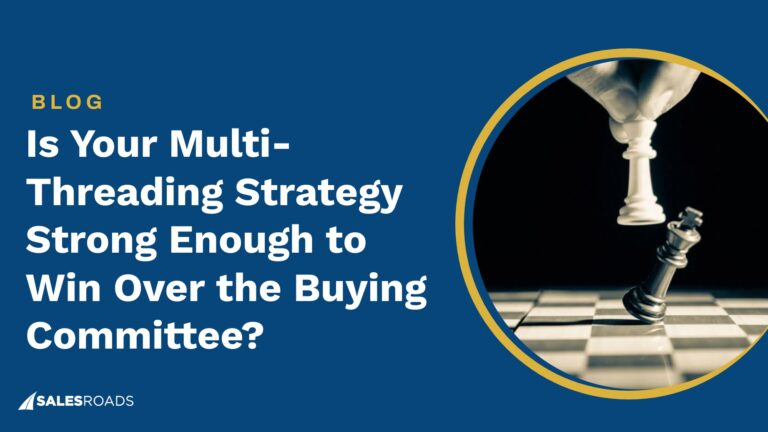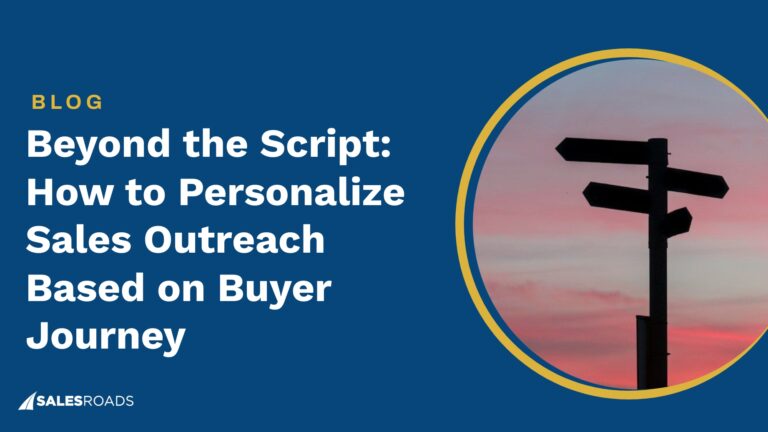We live in a digital-first world, and businesses have to augment their sales strategy to match the times. Enter: social selling.
Social selling is a sales strategy that utilizes social media, personal branding, and elements of inbound marketing to help account executives generate leads. This adoption represents a mindset shift from mass outreach to a more personalized, human-centric approach to business.
The strength of social selling lies in its ability to help businesses identify potential customers in the vast digital realm, learn their needs, engage with them on a personal level, and develop trust and credibility—all of which boost sales.
The world’s largest professional network, LinkedIn, offers a ripe opportunity for social selling.
With 65 million decision-makers and at least 10 million corporate executives maintaining accounts on the platform, potential customers use LinkedIn to search for solutions and engage with relevant content.
LinkedIn thus stands out as a crucial social selling channel for sales reps, enabling them to attract and nurture relationships with top-tier leads.
Why Social Selling is Essential for Sales Reps
The modern buyer’s journey involves extensive online research for solutions to problems and pre-sales discussions with companies on social media about potential fixes.
This requires salespeople to present themselves not only as sellers but also as trustworthy resources. Developing that credibility helps attract prospective clients, and social selling can make it easier to achieve.
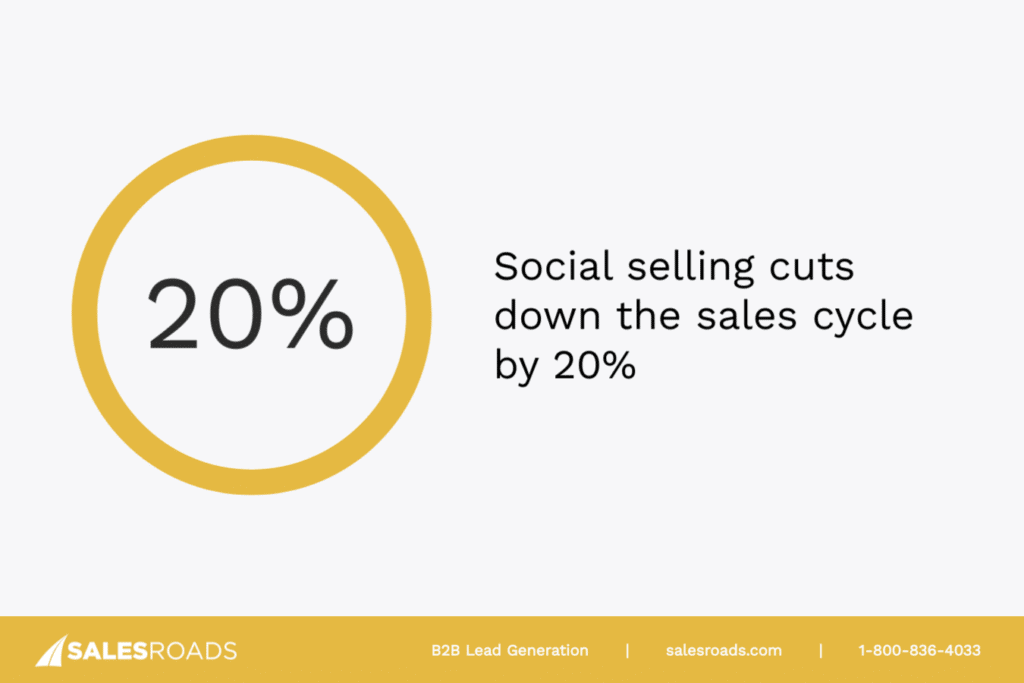
A Marketsplash report found that social selling cuts down the sales cycle by 20%, indicating its growing significance in the current sales landscape. It also underlines the need for adaptable sales strategies.
Why LinkedIn is Excellent for Lead Generation
Thanks to its unique structure and networking features, LinkedIn offers a wealth of opportunities for B2B sales reps who want to leverage social selling to boost their lead generation.
As a professional melting pot, it covers all industry sectors, levels of seniority, company sizes, and job functions, securing its position as the go-to platform for networking and prospecting.
LinkedIn users aren’t simply passive lurkers but, rather, active participants who seek knowledge and insights and are eager to engage with valuable content and form professional connections.
LinkedIn Features That Help Generate Leads
LinkedIn possesses several features that aid salespeople in identifying and nurturing potential clients, including:
LinkedIn Sales Navigator
Designed specifically for sales professionals, this feature takes prospecting to another level with its advanced sales tools that find, reach, and engage with the right leads.
- Advanced Search and Filters: LinkedIn’s advanced search functionality is a powerful ally in lead generation campaigns. It lets you filter decision-makers based on parameters like industry, company size, job function, level of seniority, and geographic location.
You can streamline your search for ideal prospects and increase your chances of engagement and conversion.
- InMail: InMail messages boast an impressive hit rate when it comes to soliciting a response from potential clients; a guide from LinkedIn states that the average email open rate is about 21.6%, while InMail can bring you 57.5% open rates.
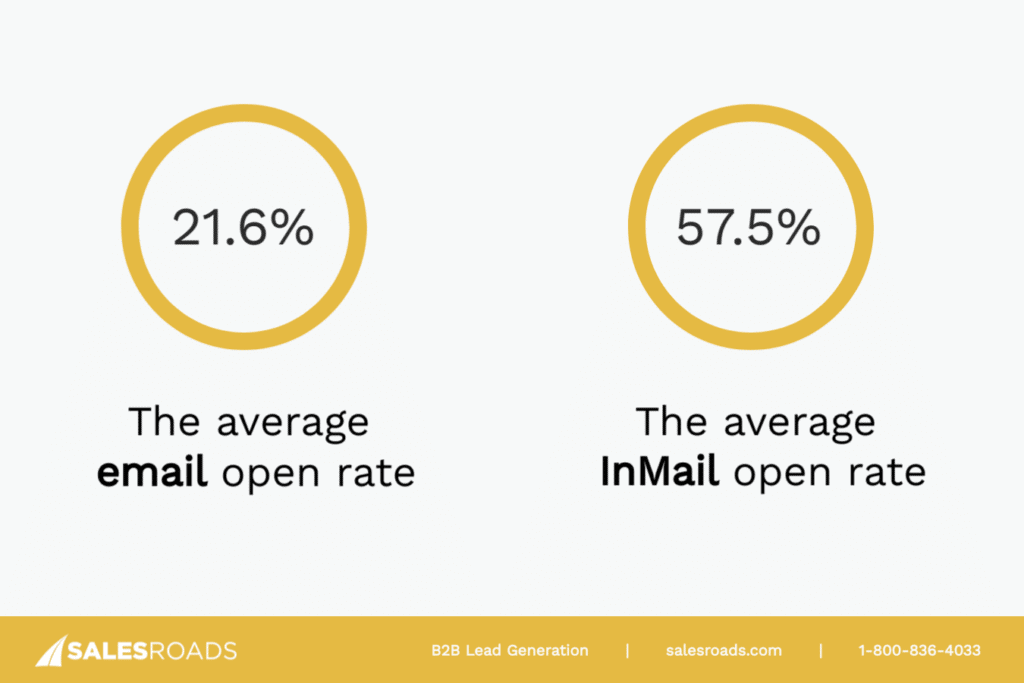
This context validates the importance and effectiveness of Sales Navigator for any lead gen campaign, making it an indispensable asset in your LinkedIn social selling toolkit.
Who Viewed Your Profile
This feature provides a list of professionals who viewed your profile page and is a goldmine of potential leads. It opens an opportunity to reach out to and convert curious visitors into viable prospects.
Conversely, when you view your prospects’ profiles, LinkedIn sends them a notification. That captures their attention and helps you stay at the top of their minds.
Social Selling Index Score
Your personal Social Selling Index (SSI) measures your effectiveness at incorporating the four pillars of LinkedIn social selling: establishing a professional brand, finding the right people, engaging with insights, and building relationships.
The SSI provides a benchmark against your peers and uncovers areas in need of improvement. Those insights help optimize your LinkedIn social selling tactics for stronger results.
LinkedIn reported that professionals with a higher SSI increase their likelihood of hitting their quotas by 51%. This statistic highlights the importance of an active, strategic approach to social selling on the platform.
A Step-by-Step Guide to Prospecting and Generating Leads on LinkedIn
By following these 7 easy steps, you can start prospecting and generating leads on LinkedIn and drive them into their sales pipeline:
1. Establish Your LinkedIn Prospecting Goals
Setting specific, measurable, achievable, relevant, and time-bound (SMART) goals is vital to the success of your lead generation strategy.
Clear objectives such as the number of new connections, leads acquired, or LinkedIn conversations initiated weekly keep your prospecting efforts focused and measurable.
2. Identify Your Target Audience
Define who you’re targeting before you begin prospecting. Don’t make assumptions about your ICP, identify who they really are, what problems they are having, and how you can help them.
3. Leverage Sales Navigator for Lead Gen
Sales Navigator can refine your search capabilities with comprehensive filters and lead recommendations that align with your ICP.
Once you’ve defined your target audience, take advantage of LinkedIn’s Advanced Search to identify potential leads. Use relevant keywords and filters to ensure the search yields relevant results.
4. Lead Scoring and Prioritization
Not all leads are worthy of your attention.
Score leads based on their interactions with your content, position in the decision-making process, and other relevant factors. This helps you hone in on leads with the highest chances of conversion.
Prioritize your focus on leads based on their score. For example, for high-scoring leads, you might send an immediate personalized message, follow up within a week, and invite them to a webinar. For lower-scoring leads, you might just send an initial message and then touch base with a casual check-in every few months.
5. Utilize Quality Content
Sharing insightful content bolsters trust in your network and positions you as a thought leader. You can provide a variety of content that resonates with your audience’s interests, such as intriguing blogs, eye-catching infographics, or informative webinars.
On LinkedIn, you have the option to post a variety of content, from carousels and documents to videos, polls, text, and images. Make the most of it by diversifying your content, rather than sticking to just one type.
6. Transition LinkedIn Leads to Sales
Build rapport and trust, then move the conversation from LinkedIn to a more personal channel, like a virtual or in-person meeting or phone call.
Direct communication assists in understanding their pain points so you can proactively offer services or products for their resolution.
7. Measure Your LinkedIn Prospecting Success
In the short term, review engagement metrics including likes, shares, and comments on your posts and articles. This data identifies active members in your network, popular topics, and even the best times to post.
In the long term, monitor and measure your prospecting efforts against your goals. Evaluate what works, identify areas that need improvement, and optimize your prospecting strategies for better results.
LinkedIn lead generation is not about selling but, rather, building relationships. Patience and consistent effort nurture these seedling connections into fruitful business partnerships.
Pro Tips on Building Your Professional Network
Perfecting your LinkedIn profile marks the initial step in your social selling journey. Real success entails the strategic expansion and engagement of your network.
We’ve provided some proven strategies to aid you in building a robust and valuable professional network on LinkedIn.
Curating a Professional Look on Your LinkedIn Profile
Your LinkedIn profile is your bait for attracting prospects. An impeccable one can significantly boost your social selling efforts.
Crafting a professional, comprehensive, and intriguing LinkedIn profile lends to a great first impression, builds credibility, and engages potential leads, so be sure to approach it with careful attention.
LinkedIn Profile Picture & Background Photo
Your profile picture is often the first thing people see, so it’s crucial to get it right. In fact, LinkedIn revealed that users with professionally taken headshots score 14 times more views. Invest in photography that casts you in a positive and approachable light to increase your visibility on the platform.
Be sure to use the recommended dimensions for every photo you upload to LinkedIn. The recommended LinkedIn profile picture size is 400×400 pixels, with a 1:1 aspect ratio.
Meanwhile, the background photo on your LinkedIn profile presents an opportunity to express your brand personality and unique selling proposition. The image should be visually appealing and align with your professional image to attract and engage prospective leads.
The recommended LinkedIn background photo size is 1584×396 pixels.
LinkedIn Headline
Your headline should be compelling and keyword-rich to ensure you show up in relevant LinkedIn searches. For example, rather than merely stating your job title like “Sales Manager,” consider using “Driving Pipeline Growth & Revenue through Innovative Sales Strategies.”
Be specific and show off your strengths to draw leads.
Keep in mind that LinkedIn headlines have a maximum character limit of 220.
LinkedIn’s About Section
The About section is your chance to captivate readers with a compelling, professional story. It should provide information that displays your value proposition, expertise, and what makes you unique.
Don’t shy away from mentioning key achievements and successes that speak to your effectiveness in your role.
LinkedIn’s Featured Section
This section is your personal portfolio where you can showcase your work, notable achievements, and media mentions. Highlight case studies, articles, infographics, or any other professional content that exemplifies your expertise and ability to deliver results.
Below is the Featured section of David Kreiger, the president of SalesRoads:
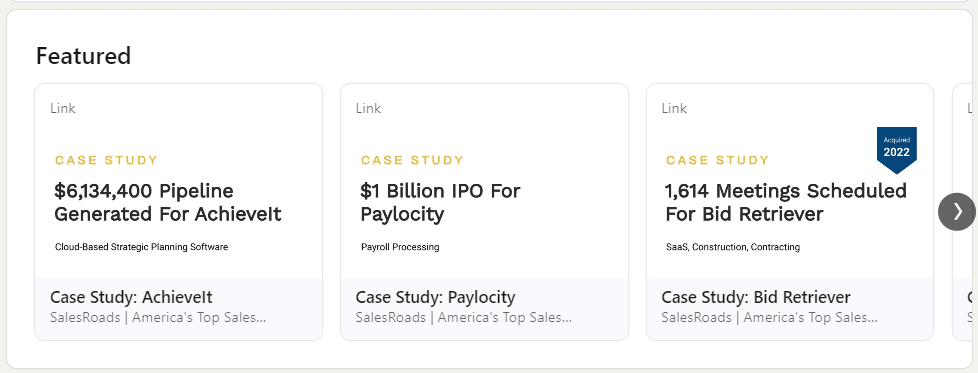
You can check out his LinkedIn profile for further inspiration.
LinkedIn’s Experience Section & Role Descriptions
Entering your job title isn’t enough. Your experience section should outline your professional journey with a clear synopsis of each role and key accomplishments. A comprehensive summary adds context to your expertise and proficiency.
LinkedIn acts as your digital business card. A curated profile helps boost your visibility and fosters trust, paving the way for fruitful conversations with prospects.
Leverage Second- and Third-Degree Connections
Your existing connections can be the gateway to new leads. Thanks to LinkedIn’s algorithm, you can connect with second-degree (connections of your connections) and third-degree associations (connections of your second-degree connections) to tap even more potential avenues.
Engage with shared content or request a warm introduction from the mutual connection to get your foot in the door. Expand your network one step at a time.
Send Connection Requests (the Right Way)
Your connection request should serve as a compelling intro that reflects your professionalism, triggers the recipient’s curiosity, and compels them to accept your request.
Personalize your message when sending connection requests. Explain briefly who you are and your reason for wanting to connect. Ensure the request is warm and genuine to instigate trust in the recipient. Doing so increases the chances of them accepting your request.
Network in LinkedIn Groups
Joining and actively participating in relevant LinkedIn Groups opens direct access to professionals who share the same interests, industry, or expertise.
Post insights, ask for advice, and comment on other members’ posts to foster meaningful engagements and lay the foundation for new relationships.
Nurture Your LinkedIn Connections
Networking doesn’t end once you make connections; you need to maintain your social momentum. Develop the relationship by sharing valuable content, engaging with updates, and offering help when possible.
If a new contact accepts your connection request, send a thank you. If they engage with your content, message them to start a conversation on the subject. If they change their job, ask about it. If they’re promoted, congratulate them.
Find genuine ways to nurture your relationship. Connections should produce mutually beneficial relationships, not one-sided sales pitches.
Common Mistakes to Avoid in Social Selling on LinkedIn
LinkedIn is a potent channel for social selling, but it’s vital to sidestep pitfalls that could undermine your efforts and potentially damage your reputation.
We’ve broken down a couple of common mistakes and how to avoid them so you can start your LinkedIn social selling journey on the right foot.
Unrealistic Expectations
Patience is important since not every attempt at networking will be successful.
Consider the advice from this LinkedIn post that says, “Don’t take it personally if you don’t get a reply when networking… Just keep refining your approach and see where you can add free value to others.”
Growing and nurturing a LinkedIn network demands strategic planning and consistent effort. Incorporate the above networking tips into your social selling arsenal to develop and benefit from a robust professional network.
Inauthenticity
Social selling revolves around building relationships, and authenticity is the cornerstone of fostering trust. Portraying a false image or amplifying your capabilities can cause more harm than benefit in that regard. Maintain genuineness in conversations and share your original experiences and insights.
False representation can easily be exposed in due course and is detrimental to your reputation.
Overselling
As one LinkedIn post emphasizes, “If your profile screams ‘I will pitch you within 5 minutes of you accepting my connection request,’ you’ll continue to be disregarded.”
LinkedIn operates as a professional networking platform, not a billboard for aggressive sales. Overwhelming your connections with sales pitches the moment they accept your connection request can be counterproductive and scare them off.
Instead, concentrate on providing value, engaging in meaningful conversations, and suggesting your product or service only when it appears to be a solution to their problem.
Sidestep shortcuts or deceptive tactics, and your business relationships will pave the way for successful, long-term collaborations.
Bottom Line
In the rapidly evolving digital business landscape, the art of social selling on platforms like LinkedIn has become an indispensable tool for sales reps.
By strategically harnessing LinkedIn’s unique features and capabilities, businesses can identify, engage with, and nurture potential leads in a genuine, human-centric manner. However, as with all tools, success hinges on its proper use. Avoiding common pitfalls and maintaining authenticity is paramount.
At its core, LinkedIn isn’t just about lead generation; it’s about forging meaningful professional relationships that can evolve into mutually beneficial partnerships. So, build, engage, and cultivate—your next big business opportunity might be just a connection away.







